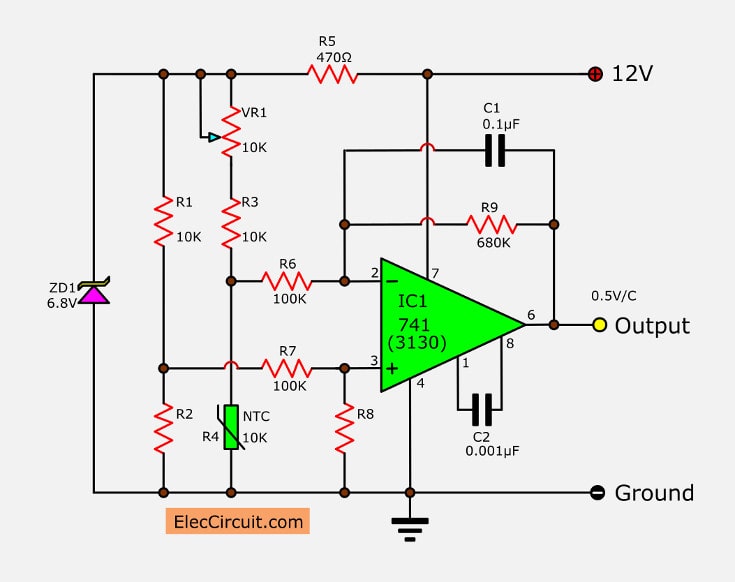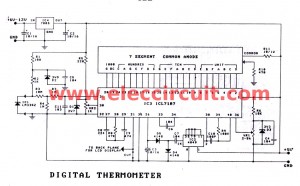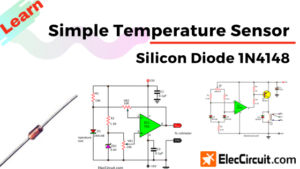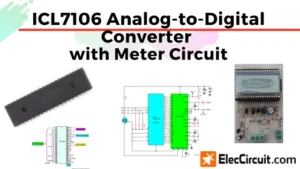This is a simple temperature to voltage converter circuit or an Electronic thermometer circuit there. Which will operate in a temperature range of 0 to 24 degrees Celsius (32 to 75 degrees Fahrenheit). The output rate of 500mV per degree Celsius. Which can be read by a normal voltmeter.
To make it easier to find devices thus Temperature sensors of this circuit. So use a coefficient thermistor relatively constant and not linear. However, the temperature range of 0-24 degrees Celsius. This is enough to use a thermometer kind of normal.
How temperature to voltage converter works
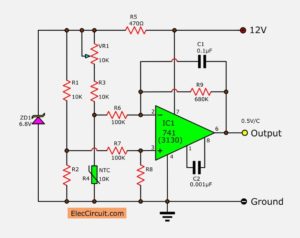
The IC1 is op-amp as the difference amplifier. There are inputs as bridge circuit includes with R1 to R4, by at R1, R2, R3, and P1 are constant arms of the bridge. And R4 is an arm of Bridget’s changing values.
The voltage across between R1 and R2 have about 3.4V at zero degree Celsius. The P1 is calibrated to the output of the op-amp is 0V.
There are conditions of the NTC, the NTC resistance at higher temperature is decreased, the voltage drop across NTC reduced. Making the output of the Op-amp with higher voltage.
IF the output is not 0.5V degrees Celsius, Then increase or decrease the R8 and R9 but to reduce or increase to equal the two.
IC1 is common op-amp IC, for example, IC 741, CA3130 or CA3140. But if used number IC741, offset capacitor (C2) did not enter because there is already a built-in IC.
The NTC is normal thermistor that resistance 10K, or use (5K to 15K) but change the value of R3 and P1 to be proportional, Select Smaller is better. Because the temperature is no inertia (Faster response to temperature).
Parts you will need
IC1: LM741 or CA3130 op-amp
C1: 0.1uF 50V Ceramic
C2: 0.001uF 50V Ceramic
ZD1: 6.8V 0.5W Zener Diode
VR1: 10K Trimmer potentiometer
R4: 10K NTC Thermistors
1/4W Resistors tolerance: 5%
R1,R2,R3: 10K
R5: 470 ohms
R6, R7: 100K
R8, R9: 680K
GET UPDATE VIA EMAIL
I always try to make Electronics Learning Easy.
Related Posts

I love electronics. I have been learning about them through creating simple electronic circuits or small projects. And now I am also having my children do the same. Nevertheless, I hope you found the experiences we shared on this site useful and fulfilling.
